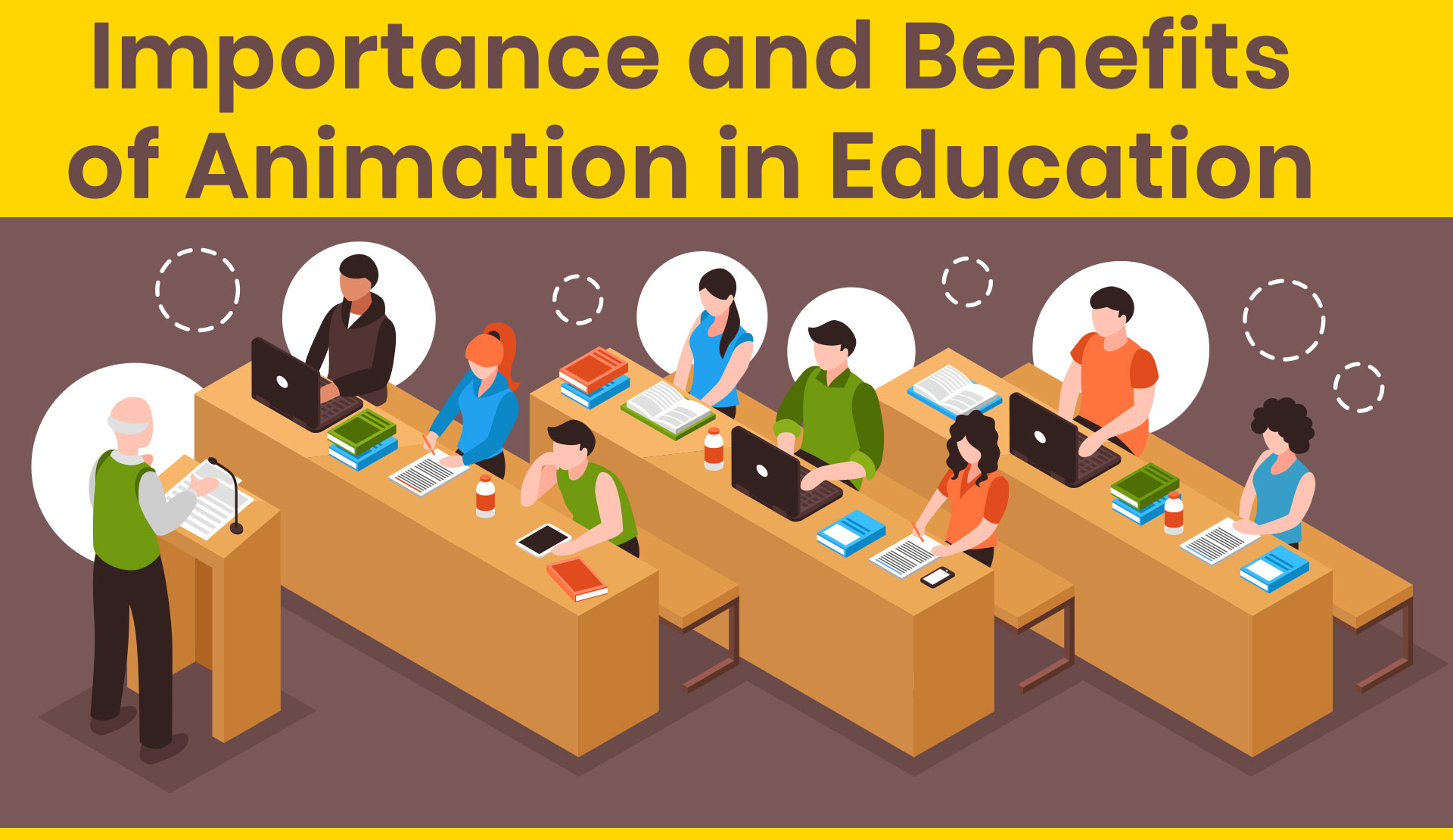
The education system has a very important role in shaping the perceptions and characters of students who will lead the world in various capacities in the future. A conventional learning framework can partially fulfil the comprehension needs of these youngsters as it is at par with the latest academic trends.
The benefits of animation in education are well-known. Any concept can be presented in a live and visual manner. It is scientifically proved that a dynamic and virtually illustrated process can be retained in memory for a longer duration than oral memorizing. The education quality can be improved by incorporating animations into classroom teaching.
Moreover, animated educational videos take the boredom away from learning. The limited attention span or lack of concentration can overcome most students' suffering. If you observe the habits of children closely, you will find that they take great delight in watching and sharing memes, videos on social sites, gifs, etc. This implies that animated content leaves a deep-rooted impression on children's intellect.
The importance of animation for children can be seen in the educational field. In classrooms, animated learning material can be used for a variety of purposes, like
● Explaining complex and challenging concepts in easy to understand the manner
● Making learning an enjoyable experience for even poorly performing students
● Presenting things in completely new outlook
The role of animation in developing an interest in learning in students is supreme. Parents and other stakeholders must promote the cause of including animation in learning.
Ways to Incorporate Animation in Children’s Education
animation in educationMany benefits can be obtained by incorporating animation in education This provided us with ways to include animation in learning pursuits. The different ways are discussed below.
Animation of Subject-based topics
Various chapters of subjects, like science, mathematics, English, etc., can be animated to relate the students to the concepts taught. Complex topics can be presented visually with fun bits reducing the challenges in understanding the topics.
Course modules can be viewed any number of times as required by a student to handle the subject complexities. The animation is captured easily in the brain longer than in normal videos. Animation can be modified and updated over a while to include any changes.
Class presentations enhanced
Teachers would now be more value-added with the help of animations. The interactive classes will keep students focused. Visual interaction would encourage more participation from students.
Students will be motivated to know more about topics. Thoughts and ideas can be presented with slide shows.
Visualizations made easy and attentive
Many topics are more complex and require more focused teaching efforts to provide clarity to students. Animated topic videos with 3D animation can provide detailed information and explanation about such topics. Multimedia components like audio, video, images, and texts can be blended to make complex topics easier to understand. Students with varying IQ levels can understand the topics with ease.
With animations, topics that baffle the mind can be easily articulated. Multimedia presentations help students visualize the concepts and easily understand them. The imagination of young minds can be broadened using animation.
Making classes available as required
Traditional classrooms are confined to rooms and schools. Students must attend classes for a fixed time, regardless of whether they learned and understood the topic. With animated learning modules, topics can be published online, allowing students to learn at their comfort and pace.
Animated lessons can be learned from any location. Access to resources can be made available from the school, home, library or any place with access to the internet. This encourages learning at ease and anywhere. Animations can be combined with background music to calm the mind and improve focus on learning.
Removing the age factor in learning
Learners of any age group can benefit from interactive animated learning modules. Varied approaches are available for students of kindergarten, school and university learners. The exciting and attention-catching animations are appealing to all age groups.
Teachers can improve productivity and make learning more efficient by using various approaches available for different age groups. Animations allow topics to be stored in memory easily for a long period. Using narratives, sound, and nerve-calming music adds more power to learning. Every learner can connect to the topic, and the brain will easily learn complex topics. Animated material will stimulate the senses.
Freedom to express
Students often feel shy or self-conscious when learning when expressing or speaking about their feelings. The presences of better minds inhibit their energies, and expressions are suppressed.
Animation can offer a simple solution to such problems in education. Characters are created and available in environments which are illustrated beforehand. One can freely express their doubts and feelings with the option to learn from anywhere and multiple times. Students can participate and discuss with more ease. Many companies are promoting animated study materials developed in schools and universities. Teachers can use the management features available with such a course to deliver more efficient and easy learning.
CONCLUSION
Multiple studies have proved animation to be effective in facilitating better learning techniques in students/learners. However, learning modules must be designed comprehensively to achieve the desired output. Experts in specialized domains are required to achieve a successful outcome.
Stimulating and attentive learning modules can be developed with experts using the latest 2d and 3d animation techniques with supporting multimedia components. This will enhance teaching to a new level.
Students and learners of any age group will be motivated and move easily to realize their true potential.